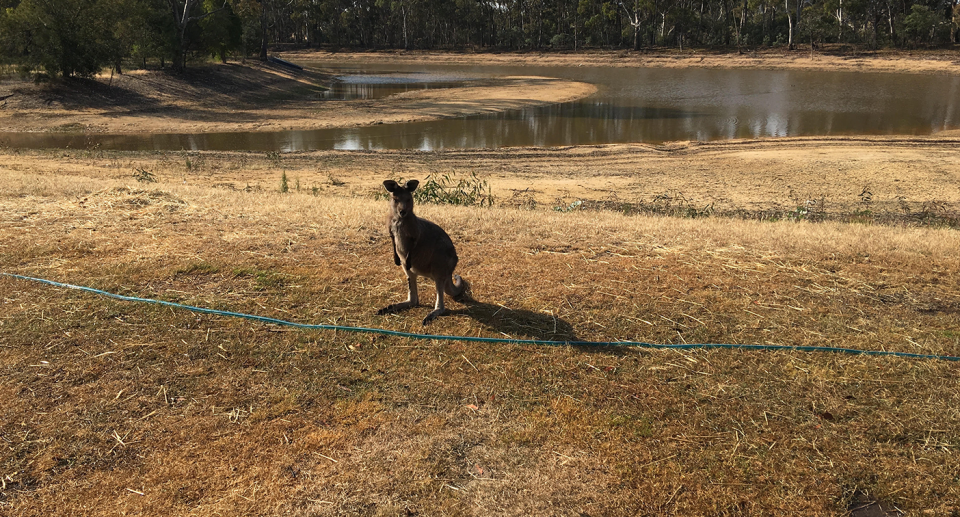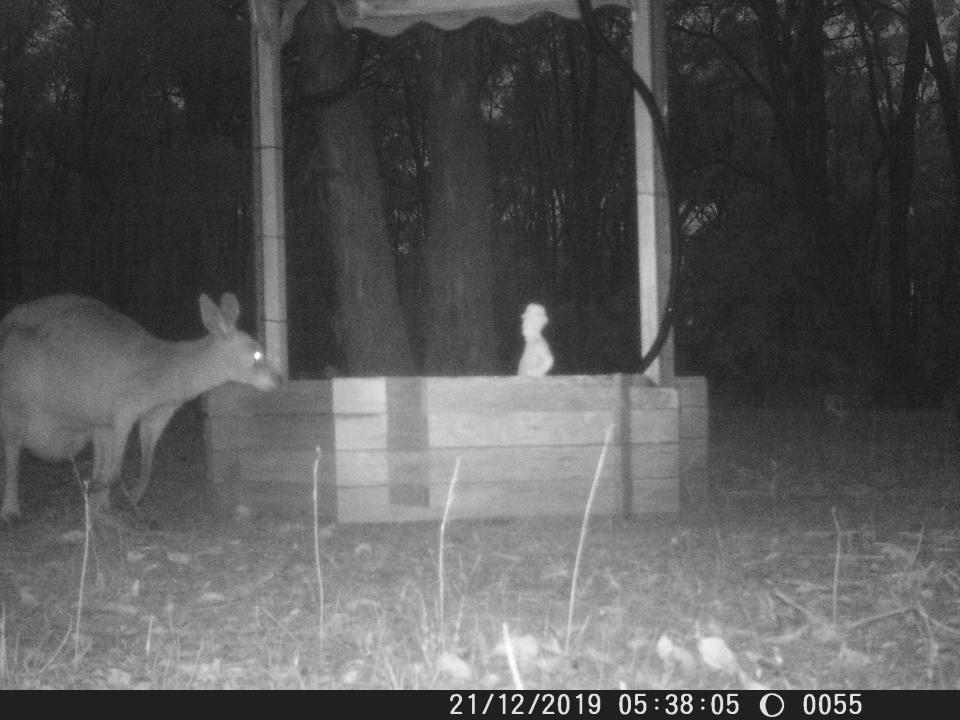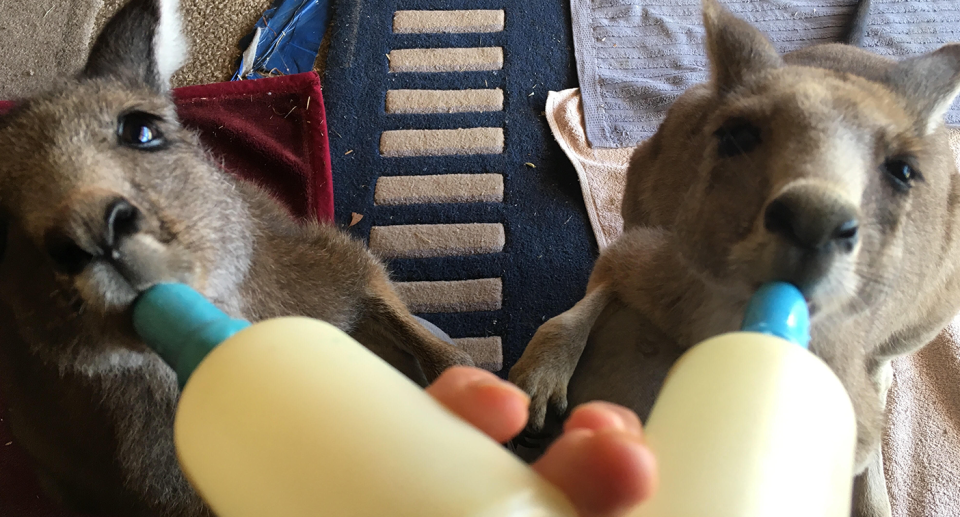Meet the mob of kangaroos protecting a carer's home from bushfires
By nurturing a mob of kangaroos on her property, a Victorian woman believes she has seen her bushfire risk naturally decrease.
When she first moved to her Elphinstone acreage several years ago, wildlife carer Nikki Medwell spent hours slashing back foliage ahead of the fire season.
By maintaining water sources for wildlife, Ms Medwell has encouraged her local kangaroos to stay close to her house.
They have repaid her by keeping the surrounding native foliage in check.


“As far as we’re concerned they keep our property safe from fire,” Ms Medwell told Yahoo News Australia.
“They keep all the grass low and trample the leaf litter in the forest.
“The tractor has just sat in the shed obsolete for the last four years as we’ve not had to use it.
“Because we welcome them onto the property, they’re doing all the work for us.
This fire season, blazes have already charred more than four million hectares and left four people dead.
Drought and bushfire have likely killed millions of native animals and destroyed their homes.
Earlier this month, Environment Minister Sussan Ley told Yahoo News Australia that a third of southeast Queensland and northern NSW’s koala habitat has been lost.

Across the country, grey headed flying foxes have been abandoning their young due to lack of food and extreme heat.
Estimates suggest 10 per cent of the entire population has died.
Flying foxes are Australia’s only long distance pollinators and will be crucial to the recovery of bushfire affected forests.
Wildlife carers are reporting that many native animals, including kangaroos are no longer abundant in large sections of the country.
Many hope the crisis will lead government to see the important role native animals play in maintaining healthy eco systems.

‘Greater love for kangaroos’
Ms Medwell is currently caring for two orphaned joeys which she hopes to release into the care of her local mob.
In bushfire affected regions of Australia, other wildlife workers have feared some property owners have become hostile to kangaroos fleeing the fires.


Ms Medwell noted that while many farmers believe kangaroos compete with stock for feed, they will only eat pasture as a last resort and prefer native foliage.
Heroic rescuer reveals why koala hospital had no choice but to put Lewis to sleep
'Absolute tragedy': Koala numbers decimated after bushfires destroy key habitats
She said that she feels privileged the community generally encourages her work.
“We are very lucky to be surrounded by very supportive neighbours that love, care and keep and eye on our kangaroos.
“We really have a shelter that is part of a community.
“There is a greater love for these kangaroos surrounding us than there are people who want to shoot them.”
The author, Michael Dahlstrom, is a registered native bird carer in NSW.
Do you have a story tip? Email: newsroomau@yahoonews.com.
You can also follow us on Facebook, Instagram and Twitter and download the Yahoo News app from the App Store or Google Play.




